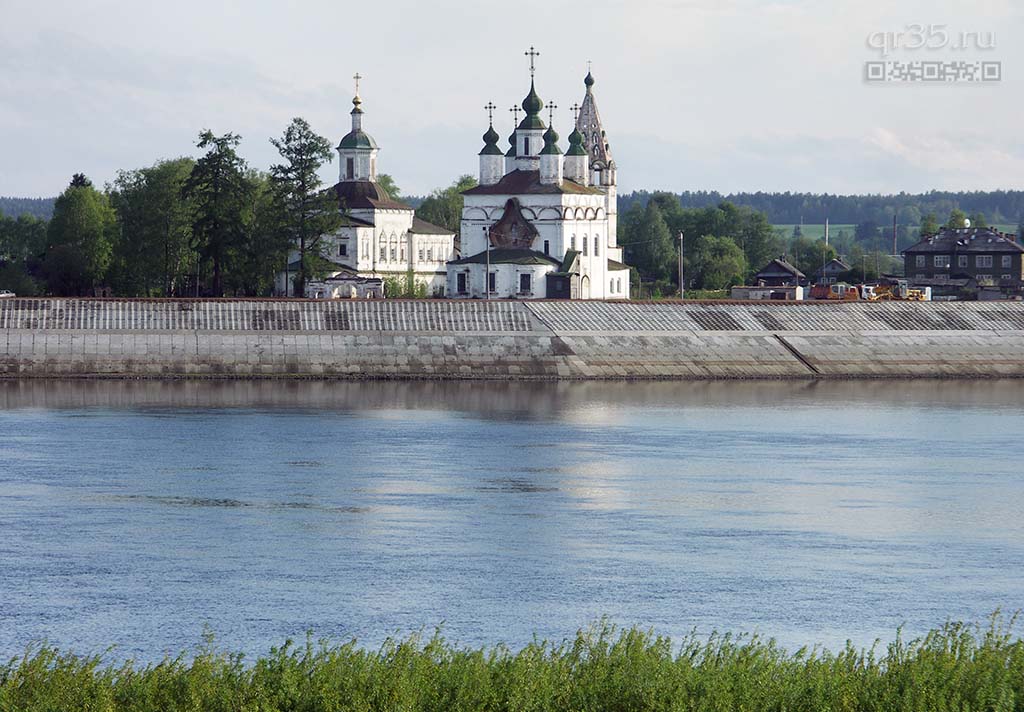It is believed that the first wooden churches at Dymkovo were built in 1383 in memory of Ustiug people’s participation in the battle of Kulikovo, which took place on 8 (16) September 1380. The dedication of the churches to Saint Dmitry Solun and Saint Sergius Radonezh indicates that the parish could really have been established either under the reign of Grand Prince Dmitry Donskoy (1350-1389) or his closest relatives and descendants. Saint Dmitry Solun was venerated as a patron saint of the Grand Prince. And social activities of Saint Sergius Radonezh (approx 1314-1392, revered as a saint since the mid-15th century) were aimed at supporting the unification of Ancient Rus' around the princely house. Saint Sergius testified Prince Dmitry’s Testament, which set a new order of succession to the throne, with his signature. For a long time Dymkovo was part of the princely family’s property. Dymkovo was first mentioned in 1461 in the Testament of Grand Prince Vasily the Dark, Dmitry Donskoy’s grandson.
The churches were built anew several times, after dilapidation or fires. According to the chronicles, in 1539, “the Kazan Tatars and the Cheremeses... burned those two churches in Dymkovo suburb, the Church of the Holy Martyr Dmitry, and also the warm Church of St. Sergius, Wonderworker». The oldest description of the Dymkovo churches is preserved in the census book of 1630: surrounded by a wooden fence and a cemetery there were “the Church of Saint Dmitry Solun, Wonderworker, a wooden summer one, and the warm Church of Staint Sergius Radonezh, Wonderworker, a wooden winter one» and a freestanding «chopped hipped bell tower, with 7 bells on it».
The extant stone cold (unheated summer) church at Dymkovo was built in 1700-1708. In the middle of the 18th century to the south of the cold church the warm (heated winter) Church of Saint Sergius Radonezh was erected.
In 1859 on the donations of merchants Ilya Yakovlevich Gribanov and Pavel Maksimovich Zhilin a stone fence with gates on the south and east sides and two small towers on the south-east and north-east fence corners were built around the churches.
In 1930 the churches were closed. At present the ensemble is assigned to Veliky Ustiug State Museum-Reserve and is used for the external display.
